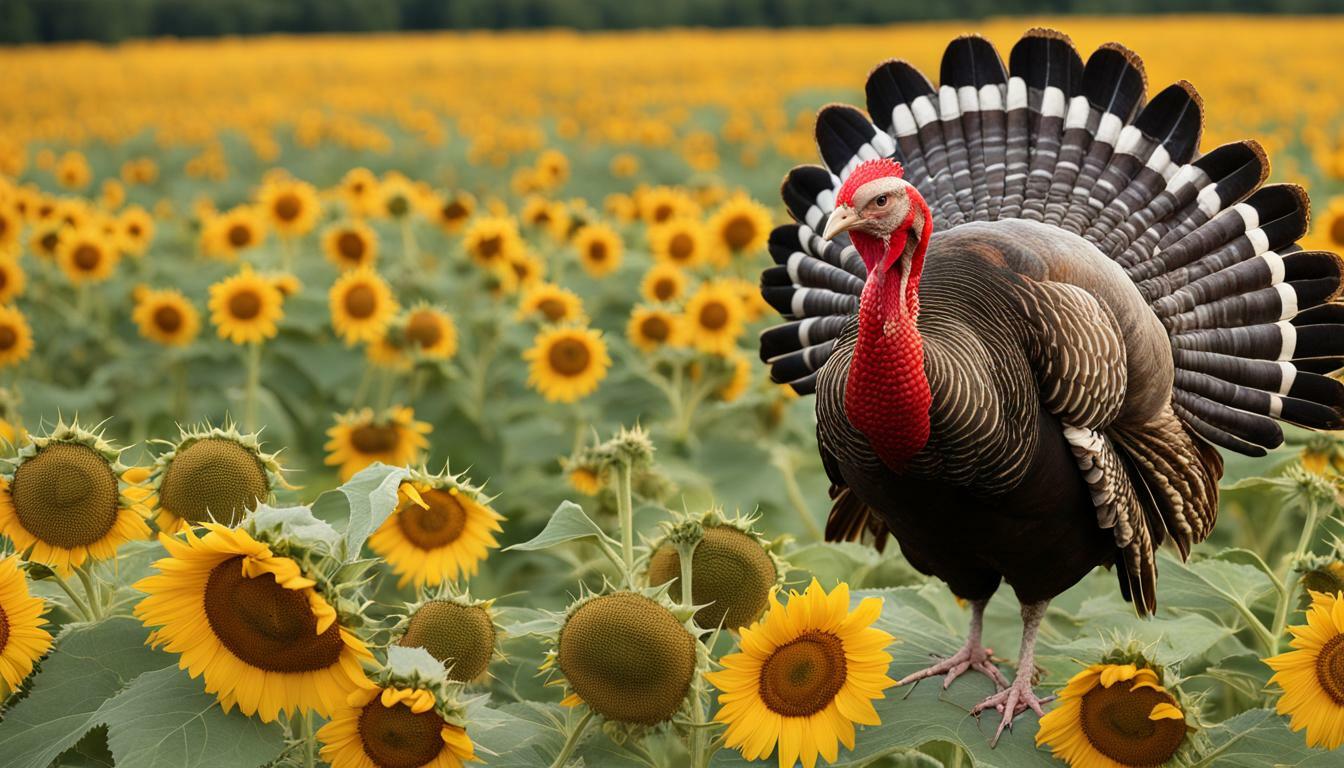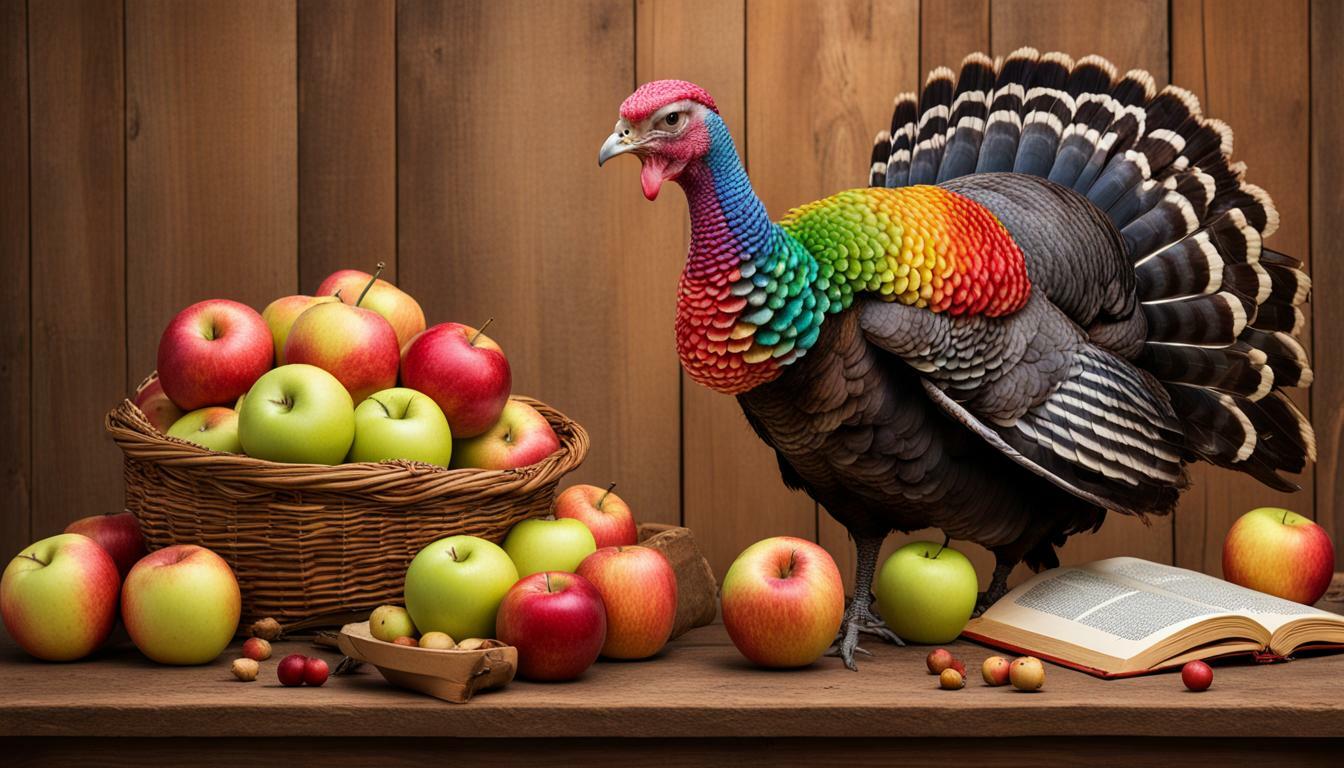Can Turkeys See Orange Color? Turkey Vision Insights

Table of content:
Turkeys have fascinating vision capabilities. Their visual system is quite complex compared to many other bird species. A common myth suggests that turkeys are unable to see the color orange. However, the latest research indicates that this is not entirely accurate.
In this article, we will explore what colors turkeys can and cannot see, why they may struggle with orange, how their eyes work, and what impacts their vision has on turkey hunting strategies.
How a Turkey’s Eyes Work
To understand turkey color vision, we first need to understand the anatomy of their eyes. Turkeys, like most birds, have excellent vision all around. Their eyes are located on the sides of their head. This gives them a wide field of view of about 270 degrees. They have good binocular vision in front and monocular vision on the sides.
Retina and Photo-receptors
A turkey eye has a retina containing photoreceptors called cones and rods. Cones allow birds to see color. Rods detect motion and light.
Turkeys have six types of cones that sense light from the red, green, blue, and ultraviolet spectra. The presence of multiple cone types gives birds tetrachromatic vision. This means they can perceive more colors than humans who have trichromatic vision with three cone types.
The turkey retina also contains a high concentration of rods. This allows excellent motion detection even in low light conditions.
Lens, Cornea, and Pupil
The turkey eye lens focuses light onto the retina. Their lenses are large, spherical, and inflexible compared to primates. This provides extreme close-up vision.
The large cornea on a turkey eye collects a lot of light. Combined with the large pupil size, turkeys have excellent low light sensitivity.
Pecten
One unique structure is the pecten oculi. This is a pleated tissue jutting into the eye that contains blood vessels. It likely provides nutrition to the retina. The pecten may also aid in detecting motion.
Scleral Ring
Many birds including turkeys have a scleral ring around the iris. This ring contains calcium deposits or cartilage. It likely helps maintain the shape of the eyeball.
Turkey Field of Vision
With eyes on the sides of their head, turkeys have a wide field of view. They can see objects in almost all directions at once without turning their head. Here are some key aspects of their visual field:
- Monocular vision on the sides with a field of view over 180 degrees.
- Binocular vision in front of about 70 degrees where both eyes can focus.
- A small blind spot of 20-30 degrees directly behind their head.
- Minimal overlap between the two eyes. Each eye sees an independent field of view.
Having minimal blind spots is very advantageous for detecting potential predators sneaking up from behind.
Can Turkeys See the Color Orange?
The standard myth states that turkeys are unable to see the color orange. As a result, hunters wear orange clothing and avoid orange gear when turkey hunting. However, the latest research indicates turkeys can perceive orange to some degree.
Here are some key facts about turkeys and the color orange:
- Turkeys likely see orange as a mixture of red and green rather than as a distinct color. Their vision spectrum does not contain a cone devoted solely to orange.
- Male turkeys (toms) may see orange more indistinctly than females (hens). Toms are tetrachromats while hens are trichromats with three cone types.
- Turkeys can probably differentiate orange from other colors, especially at close range. So wearing orange does not make hunters completely invisible.
- Orange likely appears less saturated compared to reds and greens. Turkeys may struggle to distinguish orange shades.
- Orange visibility can vary based on factors like distance, light levels, and orange tone.
While turkey vision research continues to evolve, it seems turkeys perceive orange as a distinct color, just not as vividly as humans.
How Turkeys Detect Predators
Turkeys rely heavily on their vision to detect potential threats. Their expansive field of view gives them a key survival advantage. Here are some ways turkeys use vision to avoid predators:
- Scanning with monocular vision on the sides to spot predators sneaking up.
- Using binocular vision to accurately judge distance and depth when threats approach.
- Detecting movement with their abundance of photoreceptor rods, even in dim light.
- Identifying shapes and colors of predators compared to natural surroundings. Their tetrachromatic vision helps discern camouflage.
- Seeing UV light reflections may indicate threats humans cannot perceive.
- Combining vision with hearing to pinpoint dangers. For example, spotting movement then focusing their eyes on the source of sound.
Turkeys have survived and thrived as prey animals largely thanks to their exceptional eyesight. Their visual capabilities have evolved to provide very effective predator detection.
How Lighting Affects Turkey’s Vision
As with human sight, lighting conditions affect how well turkeys can use their vision. Brightness, contrast, glare, and spectral quality all impact what turkeys can see.
- Turkeys see best on clear days when sunlight provides the full visible spectrum. Overcast days wash out colors.
- Their eyes adjust quickly going from light to dark allowing 24-hour vision. But acuity decreases in low light.
- Turkeys may be especially sensitive to UV light. Direct sunlight provides more UV cues than shade or overcast conditions.
- As crepuscular animals, turkeys are most active at dawn and dusk when light is dim but they retain some color vision.
- Moonlight and nighttime conditions turn their vision monochromatic. They depend more on motion detection.
Light intensity, angle, and spectrum dramatically change the visual information available to turkeys throughout the day. Like humans, their vision works optimally in bright, sunny conditions.
Do Turkeys Have Good Depth Perception?
With widely spaced eyes, turkeys don’t have extensive binocular overlap. But they do have enough to provide fairly good depth perception and distance judgment abilities.
Here are some factors around turkeys and depth perception:
- Their 70-degree binocular field in front creates useful stereopsis for gauging depth.
- Their close-up acuity helps precisely judge distances when predators approach nearby.
- Precise distance vision likely declines at longer ranges due to less binocular overlap.
- Rotating their head allows a turkey to align both eyes on an object and achieve better depth perception.
- Monocular vision on the sides limits distance accuracy compared to binocular vision.
Overall, turkeys have decent but not exceptional depth perception. Their excellent motion detection and visual acuity help compensate for less stereopsis.
Do Turkeys See as Many Colors as Humans?
While humans see the rainbow as having 7 distinct color bands, turkey’s tetrachromatic vision may allow them to see more distinct colors. However, research into the full extent of their color vision is limited. Here is how turkey and human color perception likely compare:
- Turkeys can differentiate more shades of red, green, blue, and purple hues thanks to their 4 cone types.
- They can see into the ultraviolet spectrum which is invisible to us.
- Certain colors like orange and brown hues probably appear less pronounced.
- Rapid color changes may be more obvious to turkeys as they track movement.
- Human trichromats see blue and yellow ranges more vividly than tetrachromatic turkeys.
- Overall color intensity is likely similar between humans and turkeys in optimal lighting.
So while turkeys may discern more colors, humans likely see brighter overall colors thanks to our yellow-tuned cones. The two systems simply have different strengths.
Can Turkeys See Well in The Dark?
Turkeys are known to have excellent night vision compared to many other birds. They can function effectively at night but do lose some visual capabilities. Here is how their vision changes in low light:
- Rod cells allow impressive sensitivity in low light. But acuity and color vision decrease.
- Their eyes fully dilate at night to gather as much light as possible.
- Lack of true binocular vision limits depth perception accuracy in darkness.
- Night vision is monochromatic since cone cells require more light to function.
- Motion and shape detection remain strong in dim light thanks to the abundance of rods.
While inferior to daytime vision, turkeys retain impressive nocturnal vision. This helps them roost safely, detect nighttime predators, and avoid collisions in darkness.
Things That Limit Turkey’s Vision
Despite having amazing vision overall, there are some limitations and vulnerabilities for turkeys:
- Rain or wetness can impair vision until their eyes dry and regain water resistance.
- Strong sunlight at low angles can cause glare issues much like in humans.
- Dust, sand, or debris can temporarily reduce visual clarity.
- Injury or eye diseases may damage a turkey’s vision permanently or temporarily.
- Male turkeys can suffer temporary vision loss after displaying when blood rushes to their head.
- Vision declines naturally with old age as in humans. Cataracts are common in elderly turkeys.
But aside from these vulnerabilities, turkeys have evolved excellent all-around vision well-tuned for their environment and lifestyle. Their senses complement each other effectively.
Conclusion
While the old myth suggests turkeys cannot see orange, their actual visual capabilities are much more complex. As tetrachromats, turkeys can perceive orange as a distinct color, just not with the same intensity as humans. Their exceptional eyesight relies on more than just color vision to identify threats and navigate the world around them.
Next time you encounter these fascinating birds, take a moment to appreciate the beauty of their visual system that plays such a key role in their lives. We still have much to learn about animal senses that in some ways surpass our own. Turkeys are a fine example of how vision can evolve in intricate ways to serve the needs of a species.
Welcome. I’m Adreena Shanum, the proud owner of this website, and I am incredibly passionate about animals, especially poultry. I founded adreenapets.com as a labor of love, stemming from my desire to share my knowledge and experiences with poultry enthusiasts worldwide.




